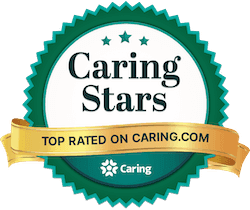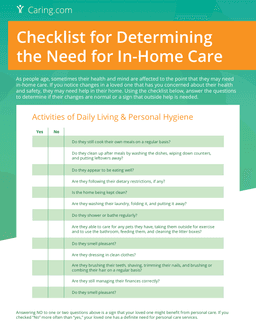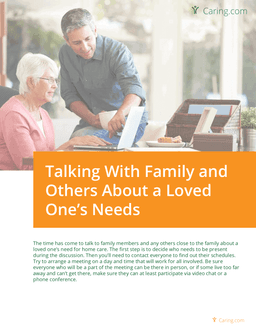Home Instead - Palos Heights, IL
12416 S Harlem Ave, Suite 100, Palos Heights, IL, 60463
5.0
(20 reviews)
"Agency has been very responsive to our added requests...."
READ MOREA part of Chicago’s metropolitan area, Blue Island is a vibrant community with a population of approximately 22,600 people with 11% aged 65 and older. It’s well known for its antique stores, art galleries and fine dining. Seniors also have access to several medical facilities, including Advocate Christ Medical Center and Ingalls Memorial. Seniors who receive homemaker services in Blue Island pay on average $4,957 per month, which is for those who need assistance with personal care. For skilled medical care, home health care costs slightly more at $5,053, according to the Genworth 2020 Cost of Care Survey.
Below we’ve compiled a comprehensive directory of every home care provider in the Blue Island area – complete with services offered and reviews from families who’ve actually used the service. In addition to our in-depth provider listings, we’ve compiled resources to help seniors and their families to access all the tools they need to age in place safely and gracefully.
12416 S Harlem Ave, Suite 100, Palos Heights, IL, 60463

5.0
(20 reviews)
"Agency has been very responsive to our added requests...."
READ MORE2045 W Howard St , Chicago, IL, 60645
5.0
(3 reviews)
"My Interaction with my care giver is pleasant, clear, and polite. The agency has provided me with excellence caregiver service. My caregiver, assisted me in my home. She does household assignment's cooking, cleaning, and laundry...."
READ MORE10220 S Cicero Ave, Suite 204 , Oak Lawn, IL, 60453

4.7
(26 reviews)
327 Harrison Street, Oak Park, IL, 60304
5.0
(10 reviews)
"ARIS provided their in home service to my father while he was receiving in home hospice care. Their level of professionalism and service helped my family during a crucial time in our lives. I don't know how we would have made it during this time peri..."
READ MORE9944 S Roberts Suite 111 , Palos Hills, IL, 60465
5.0
(5 reviews)
"We had a wonderful caretaker from Purple Spring Home Caregivers for my father. Purple Springs always answered the phone and immediately responded to any issues I had. A great company to work with!..."
READ MORE7244 Benton Dr., Frankfort, IL, 60423
5.0
(4 reviews)
"The daily caregiver Right Choice provided for my mom was a caring, thoughtful person, and kept my mom busy with activities that she enjoyed. My mom was able to stay in her home for several years because of this wonderful service...."
READ MORECaring's Family Advisors are here to help you with questions about senior living and care options.
776 Illinois Rte 59 Suite 162 , Naperville, IL, 60540
5.0
(3 reviews)
"Agency provided home based care following my shoulder surgery. I am very pleased with the service provided. Coordinator was very professional and efficient in providing me caregiver. My caregiver was very punctual, caring helpful and would volunteer..."
READ MORE2720 S River Rd,, Ste 116, Des Plaines, IL, 60018
4.7
(6 reviews)
"I used the Angels for both parents they were everything you can ask for, they made you feel at ease and treated my parents like family. The office staff are very professional, helpful and responsive. I highly would recommend them to anyone hands down..."
READ MORE2051 W Howard St, Ste A , Chicago, IL, 60645
5.0
(2 reviews)
"Bernice is such a nice lady and truly cares for people. The owner is amazing and they take pride in what they do. ..."
READ MORE4107 W 47th Street, Chicago, IL, 60632
5.0
(1 reviews)
"Sapex home healthcare was very good to my family. My dad who a suffered from terminal cancer was provided with compassionate services from this agency before he passed away this fall. All caregivers assigned to take care of my dad were awesome from ..."
READ MORE1800 Ridge Road, Suite 2E, Homewood, IL, 60430
5.0
(1 reviews)
"The caregiver that Addus Healthcare Services provides us is fine. She's very good and we love her. She's physically strong, very confident, compassionate and she cares about me. However, the accounting for her payment is terrible. We cannot match the..."
READ MORE141 Indiana Street , Park Forest, IL, 60466
5.0
(1 reviews)
"Very good service. I like being taken care of by Lean on we. My doctor referred this agency for their professional skilled nursing service after my procedure. I am totally satisfied. I will definitely recommend this agency to my friends and also to..."
READ MORE4137 Sauk Trail Suite 153, Richton Park, IL, 60471
5.0
(1 reviews)
"I needed home care for my parents right away and Amazing Grace Home Care Service provide services promptly and our caregiver is very compassionate with my parents that’s a plus...."
READ MORE509 Ridge Road , Munster, IN, 46321
4.0
(2 reviews)
"Companion Care took care of my father for many years and I could not be happier with the in-home care they provided. The hours started very minimal and gradually increased over time. This company is excellent to work with! They care and customize ..."
READ MORE9405 Bormet Dr., Suite 4, Mokena, IL, 60448
4.0
(1 reviews)
"The caregiver we used a lot was very good. She provided us a very good service. She's a live-in caregiver and took good care of my mom. Also, Christina from the management was very accommodating to us. We neved had any problems with billing and sched..."
READ MORE101 Royce Rd, Bolingbrook, IL, 60440
"Welcome to Guardian Angel Caregivers Home is where your heart is and there is no other place to live like your own home Guardian Angel C..."
READ MORE10829 S. Western Avenue,, Suite B, Chicago, IL, 60643
" Home Companion Solutions provides non-medical companions in the Chicago area. We are woman owned and Registered Nurse owned and operated an..."
READ MORE1938 Great Plains Way, Bolingbrook, IL, 60490
"Welcome to UC – Cares Home Health Services UC-Cares Home Health Services, LLC believes that no two clients are the same and that each c..."
READ MORE
9500 South Avers, Suite 1, Evergreen Park, IL, 60805
"Senior Helpers in-home care services are designed so our clients get as much or as little help as they require to enjoy living independent..."
READ MORE9140 Broadway Ave, Brookfield, IL, 60513
"Visiting Angels Senior Care in Brookfield, IL can assist you in providing in-home senior care services in the Brookfield, IL area. Inviting ..."
READ MOREAccording to the 2020 Genworth Cost of Care Survey, the average cost of home care in Blue Island is $4,957, which is $190 more than the state average but $906 less than the national average of $4,481. Home care in Champaign is one of the most expensive in the state at $5,005. Rockford, Peoria and Carbondale residents can all expect to pay less than those in Blue Island with prices at $4,872, $4,385 and $4,195.
Blue Island
$4,957
Illinois
$4,767
United States
$4,481
Rockford
$4,872
Peoria
$4,385
Champaign
$5,005
Carbondale
$4,195
Blue Island has a number of long-term care options for seniors. Home care and home health are priced at $4,957 and $5,053 and are designed for seniors who prefer to remain in their own homes. Adult day health is the least expensive at $1,614 per month but it only offers care during the day. Assisted living is a residential facility for those who require modest assistance at $4,950, while a nursing home offers the most comprehensive care at $8,076 per month for a semiprivate room.
Home Care
$4,957
Home Health Care
$5,053
Adult Day Health
$1,614
Assisted Living
$4,950
Nursing Home Care (semiprivate room)
$8,076
Note: Data for Blue Island was unavailable, so data for the nearest city, Chicago, was used instead.
Given the high cost of in-home care, many people use one or more forms of financial assistance to cover the expenses. Below, we explain some of the most common sources of financial help for paying for in-home care. If none of these options are available to you, you can reach out to your Area Agency on Aging or Aging and Disability Resource Center to learn about local resources.
Long-Term Care Insurance: Long-Term Care Insurance covers expenses related to senior care, including in-home care. Depending on the policy type, beneficiaries may receive a cash payment to use towards long-term care or reimbursement for qualifying long-term care expenses. Note that there are limitations- typically a maximum benefit of $150 per day- and exact coverage terms vary depending on the exact policy, so always check the details.Medicare: Medicare does not cover in-home care because it is classified as custodial, or non-medical, care. However, some Medicare Advantage and Medicare Supplement plans, which offer expanded benefits, may cover in-home custodial care.Medicaid: Medicaid coverage of in-home care varies between different states because it is not a federally mandated benefit. Currently, all states cover some in-home care either through their standard Medicaid or a waiver program. The specific coverage rules are set individually by each state.Veterans’ Benefits: The Aid and Attendance benefit is a monthly cash payment that beneficiaries can use to pay for senior care, including in-home care services. To qualify for A&A, Veterans must already receive the VA pension and meet several additional requirements, including needing assistance with the activities of daily living.Contact the Department of Veterans Affairs to learn more.Reverse Mortgages: Home Equity Conversion Mortgages (HECMs) are federally insured loans that are available to homeowners age 62 and over. Reverse mortgages allow you to access a portion of your home’s equity in cash, tax free. Many seniors use reverse mortgages to finance their care expenses, including in-home care. Note that although there are no monthly payments due on reverse mortgage loans, borrowers do have to repay the loan once the last surviving homeowner passes away, moves, or sells the home.
Free and low-cost programs and services are offered to seniors who live in Blue Island and the surrounding region. These services are offered by both government and private agencies and are designed to help improve quality of life.
| Resource | Contact | Service |
|---|---|---|
| AgeOptions | (708) 383-0258 | AgeOptions connects seniors in the area with programs and services that meet their needs. The agency partners with other businesses and community organizations to provide programs that allow individuals to remain in their homes independently as long as possible. These programs and services include home-delivered meals, fall prevention, companionship, transportation, housekeeping and help applying for benefits. |
| Illinois Low-Income Home Energy Assistance Program (LIHEAP) | (877) 411-9276 | LIHEAP helps seniors and low-income families pay for home energy bills, mostly heating in the winter. Eligible seniors may not have incomes that exceed 200% of the federal poverty level. The benefit pays a one-time payment to cover the cost of an individuals’ energy bill for an entire season. |
| ComEd Energy Efficiency Program | (708) 597-8603 | The ComEd Energy Efficiency Program provides weatherization upgrades to low-income seniors. These upgrades include insulation and air sealing. To be eligible, seniors must live in a home that's at least 30 years old, must receive electric service through ComEd and have a household income of 80% of the average area income. |
| Salvation Army Crossgenerations Corps Community Center | (708) 332-0100 | The Salvation Army Community Center provides nutritious meals for seniors Monday through Friday. The organization also provides Thanksgiving and Christmas meals for individuals and families who are unable to provide for themselves. The center also offers recreational sports and fitness programs, comprehensive case management and daily activities, including music classes, exercise, a walking club, bingo, jewelry making and card games. |
| Catholic Charities Senior Care Management | (847) 546-5733 | Case management services provide comprehensive services that help seniors live independently. These programs include benefits assistance, transportation, caregiver support, Adult Protective Services and home-delivered meals. |
Aging can be a difficult process, and loved ones may not always ask for help – often times it’s up to their family to evaluate their need for help around the house. While no two situations are exactly alike, this checklist can help you and your loved ones determine when it’s time to start the search for a home care provider.


If you’ve determined that your loved one needs the assistance of a care provider in their home, it may be time for a difficult conversation. Handled correctly, however, this process can bring a family together and ensure that everyone’s concerns are addressed. Use this PDF as a starting point to help the conversation stay as positive and productive as possible.

